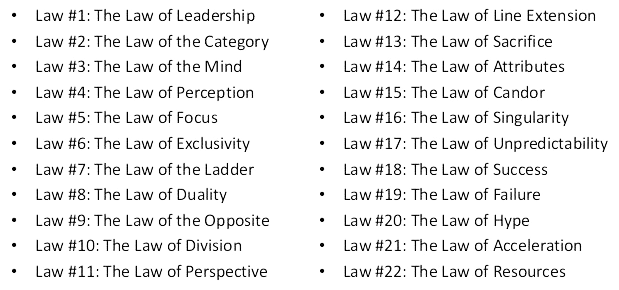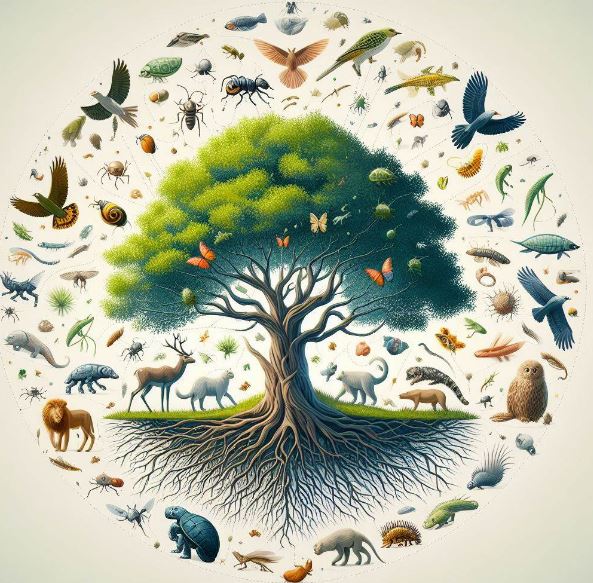The ecosystem is a world formed based on the food order under the principle of survival of the fittest. Within this ecosystem, there exists the concept of an Ecological Niche. An Ecological Niche refers to the habitat or position within the food chain that an organism occupies. Simply put, it can be thought of as “what food does it eat in which area?” In the ecosystem, this translates to the spatial, temporal, and functional position that a species occupies. From the term ecological niche, it becomes clear that the “niche” used here is the same as what we refer to in the context of a market niche.
Preemption of Niche Markets
Organisms must occupy their own ecological niche to survive. Therefore, every living organism in the environment occupies its own unique space, or role, maintaining and perpetuating the diversity of life on Earth. In an environment with limited resources, the law of the survival of the fittest and competitive exclusion always prevails. Gause, who argued that the competitive exclusion principle is a fundamental law of ecosystems, conducted an experiment by placing two protozoa of the same genus but different species in a bottle with limited food. These small creatures managed to coexist and share the food. However, when two organisms of the same species were placed in a bottle with the same amount of food as before, they fought each other to death.

In other words, two competing species cannot live in the same place, at the same time, in exactly the same way. Ecologically, this means that the same species cannot coexist in the same habitat. Therefore, for two of the same species to both survive, one must migrate to a different location or they must have different diets. Even within the same species, having different diets can facilitate easier coexistence. In ecosystems, there are organisms that employ strategies to increase their chances of survival by having different diets for adults and their offspring. For example, the diets of frogs and tadpoles differ, as do those of caterpillars and butterflies.
Biologists report on organisms coexisting through niche differentiation. In reality, in ecosystems where more than one species competes for the same resources, the forces gradually differentiate, occupying different ecological niches and coexisting.
The lesson of this ecological law is that competitors must either possess superior strength or be even slightly different; otherwise, individuals with identical ecological niches cannot coexist. This is differentiation. Gause calls this the “Principle of Survival by Differentiation,” asserting that for two competing species to coexist, there must be at least one scarce resource. Gause established through various experiments that under conditions of limited resources, two species cannot coexist in the same manner, implying that if differentiation occurs between the two species, then coexistence is possible. Moreover, competition among species can eventually lead to habitat partitioning, allowing each to occupy the optimal habitat and escape competitive exclusion.
Frank Sulloway, the author of “Born to Rebel,” argues that this “principle of differentiation” also applies within family dynamics. Assuming parental care as a limited resource, siblings employ their own strategies to preoccupy a unique position. For instance, firstborns often identify themselves with authority, being conformist and conservative, whereas later-born children tend to be adventurous, creative, and rebellious, questioning the status quo. It’s not that they are born with different genes, but rather their behavioral patterns evolve differently in competition for parental attention.
In business, a niche market refers to an unexplored market. Historically, U.S. retail primarily targeted urban populations. However, the founder of Walmart, now a leading retail company, adopted a strategy of entering towns with a population under 50,000 where he faced no competitors, allowing him to capture 80% of the market, making it impenetrable by others.

As companies continue efforts for survival, like ecosystems, market diversity emerges. Al Ries and Jack Trout, in “The 22 Immutable Laws of Marketing,” call this phenomenon “The Law of Division.” The soda market was first divided by Seven-Up, which created the lemon-lime soda market away from the cola market. The beverage market then further divided into markets for sports drinks, fruit beverages, and vitamin drinks, a phenomenon occurring as companies adjust their ecological niches within the challenging cola and lemon-lime soda ecosystems.
One domain starts from a single, simple object. Computers are an example of this. Over time, this domain has subdivided into other areas such as mainframes, minicomputers, workstations, personal computers, laptops, notebooks, and pen computers. The law of division applies to cars, televisions, beer, and even nations.
In modern society, the competition between companies is no different from this biological law. To survive in the same market, whether through marketing, pricing, or service, a differentiated strategy is necessary; otherwise, extinction is inevitable if competing under identical conditions.
Therefore, differentiation means securing a unique position in at least one aspect, and if that becomes impossible, it is an effective attitude to withdraw early and concede defeat. A monopolistic market implies that a few companies have secured an overwhelming advantage in possible elements within that market, or that the criteria for those elements are uniform. Survival in such a market involves targeting niches and thereby securing a habitat.
In Lanchester’s laws, the case where the stronger party always wins involves three assumptions or premises. The strong defeat the weak when they face each other directly in the same place, with the same weapons, using the same methods. Therefore, if the weaker party changes even one of these conditions, the nature of the fight becomes unpredictable. In that case, the weaker should not satisfy the conditions favorable to the stronger but rather should completely reverse them.
The place of the fight, the weapons used, and the method of combat must be different; if not, the weaker must hide in a narrow space and wait until conditions become favorable. In market terms, this means targeting niche or marginal markets.
The way for the weaker to defeat the stronger is to completely reverse the overwhelmingly favorable conditions that the stronger possesses. If the strong face the weak under the same conditions, the strong are sure to win. However, if the weaker party changes any of these conditions, there is enough possibility for them. Moreover, the inevitable complacency, bloated size, and dispersed efforts due to the strong being strong can be relentlessly exploited by the weaker.
Therefore, when formulating a strategy for the weaker, it is crucial to remember that the paths of the strong and the weak are different. The most dangerous thought for the weaker is the belief that by merely imitating the market leaders, they can share the market. Thus, the basic strategy for the weaker is not imitation of the strong but ‘intentional differentiation.’
One effective strategy is to identify and enter a new niche market—one that dominant players either overlook or deem insignificant. Niche markets are usually small and free of competition. For instance, Rolls-Royce successfully targeted the luxury car market, a niche where it now leads in selling cars priced over $100,000. Few competitors challenge Rolls-Royce, partly because the market size is relatively small and partly because Rolls-Royce enjoys a significant first-mover advantage. This strategy enables smaller companies to avoid direct clashes with larger competitors or to dilute their focus.
Previously, the law of inequality in most markets, comprising two giants, one dwarf, and many midgets, was discussed. The numerous midgets survive longer because they act as specialists. In other words, they survive because they complement the top three companies or operate in different markets.
However, if the third largest company gives up competing in the big market and moves to the specialist market, even that small market may be shaken. Ultimately, only up to the third place survives in any given market. Therefore, to survive stably in the market and generate profits, one must always ponder whether to be a generalist or a specialist, and if one cannot reach third place in the targeted market, it might be necessary to abandon it and look for another.
Targeting a niche market means not facing the stronger directly. If this concept is expanded a bit more, it can become a method to divide the enemy. Politicians always polarize their opponents. By setting them against each other, space may be created for oneself to enter and secure a competitive position.
The most straightforward way to gain a competitive edge is to secure advantageous resources or positions before others do. In any competition, while the defender does not always emerge victorious, the attacker typically needs to allocate more resources than the defender, as it is generally more beneficial to defend than to attack. Therefore, by entering a small market early, you increase your chances of establishing a dominant position

One of the principles of competition proposed by Clausewitz, the author of “On War,” is the “superiority of defense.” According to general combat principles, the attacking side must have at least a 3 to 1 advantage at the point of attack to be successful. This is because defenders can use cover such as fortresses or trenches, which lowers the accuracy of the enemy’s fire. Therefore, if both sides have a 50% hit rate, the attacking side’s accuracy will typically be significantly lower. Thus, without a clear numerical superiority or superiority in weaponry, the attacking side is likely to suffer greater losses.
In military activities, the superiority of defense manifests regardless of time and space. Defenders move less than attackers and can maximize the use of their resources. From the attacker’s perspective, it is only when the defenders are caught in the arrogance of being the victor that they are vulnerable.


답글 남기기